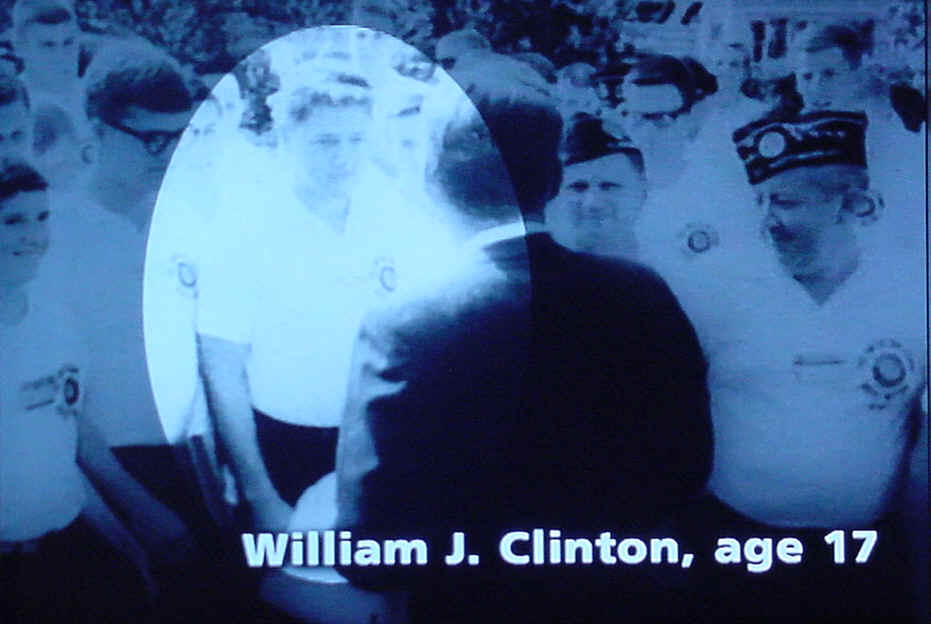
Image: George Cassutto and National Archives
The Presidency
John F. Kennedy won the 1960 election and became the 35th President at the age of 43.
Kennedy became the youngest President ever elected to the office. Theodore
Roosevelt was 42 when he was sworn in after the death of President William
McKinley. Kennedy's victory over Richard Nixon, a sitting and popular
vice-president, was a hard fought battle. Kennedy achieved a slight majority of
about 120,000 in the popular vote, which is a very narrow
margin. He fared better in the Electoral College, winning over Nixon 303 to
219.
Kennedy's legislative record was hampered by the fact that the he lacked a strong majority in Congress. Most of his domestic policies stalled on Capitol Hill. Kennedy wanted to cut taxes to stimulate the economy, a plan that was pleasing to Republicans but that withstood resistance among Democrats. The Republicans in Congress failed to support him as well because they feared the reduction in revenue would result in a larger budget deficit. Kennedy also face Republican and Southern opposition to reforms in civil rights such as desegregation of public facilities. The Supreme Court had ordered public schools and interstate busses desegregated during the 1950s and early 1960s, but Kennedy had to depend on the Justice Department, led by his brother Attorney General Robert Kennedy, to get the states to comply with the Supreme Court's orders. Kennedy resorted to executive orders to institute desegregation policies, but he was unable to get a comprehensive civil rights bill through Congress. He knew he would have to wait until his second term to speak out boldly against racism and segregation, thereby throwing his full support behind the growing Civil Rights movement, led by the increasingly popular and charismatic Martin Luther King, Jr. King had just made his "I Have a Dream" Speech at the Washington Monument, and the nation was shocked by racist violence carried on by the police in Birmingham, Alabama. Kennedy's civil rights bill would become law, but only after his death. it would be up to his vice-president, Lyndon Johnson, who at one time was Senate majority leader, to overcome segregationist forces in Congress to get the bill into law.
Kennedy's foreign policy got off to a difficult start just after he assumed
the Oval Office. He promised military assistance in the invasion of Cuba at the Bay
Of Pigs in 1961. The mission failed, and over 1,000 Cuban exiles were defeated
on the beach because the United States failed to provide air support when it was
needed. Cuba moved closer into an alliance with the Soviet Union, and as a
reaction to the Bay of Pigs, dictator Fidel Castro allowed the Soviets to
station nuclear missiles in Cuba, all of which had range to hit US cities on the
east coast, including Washington, DC. During the Cuban missile crisis he ordered a naval and air quarantine of
shipments for offensive weapons to Cuba in fear of them being used against the United
States. He promised the United States would not invade Cuba when the Soviet Union removed
there weapons. He also stepped up military aid to South Vietnam. While in he was in office
he met a seventeen year-old boy who would later become president himself. The
boy's name
was William Jefferson Clinton, 42nd President of the United States.

Image: George Cassutto and National Archives
| Early Life | President
| Senator |
| Autopsy | Theories | Oswald | Time Line | Animated Gif |
| Funeral Pictures | Air Force One
Flight | Links |
| Home | Bibliography |